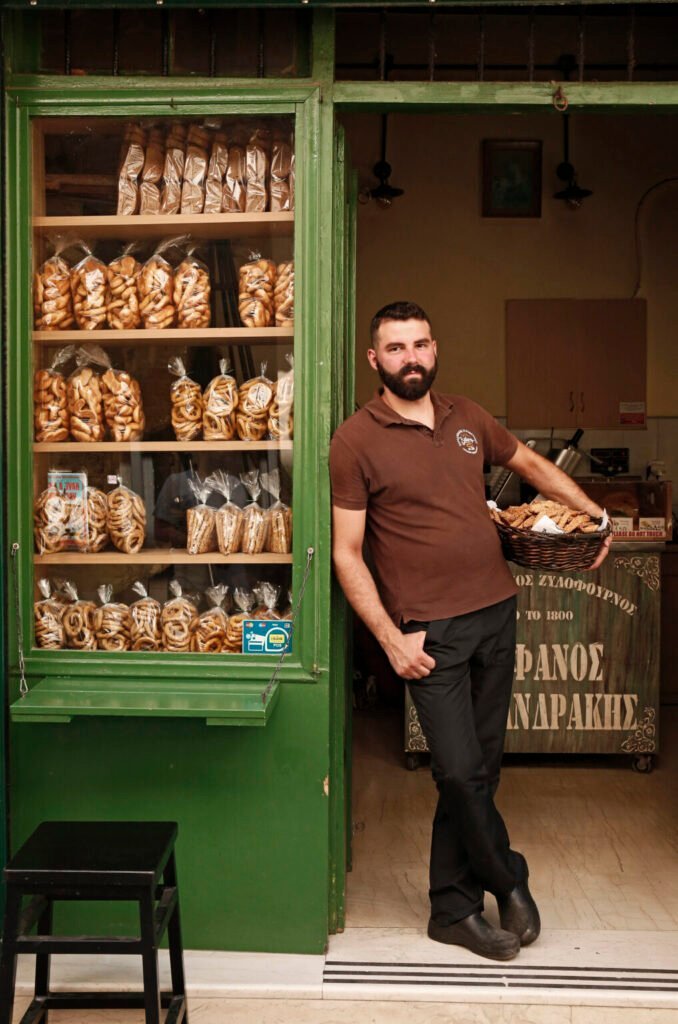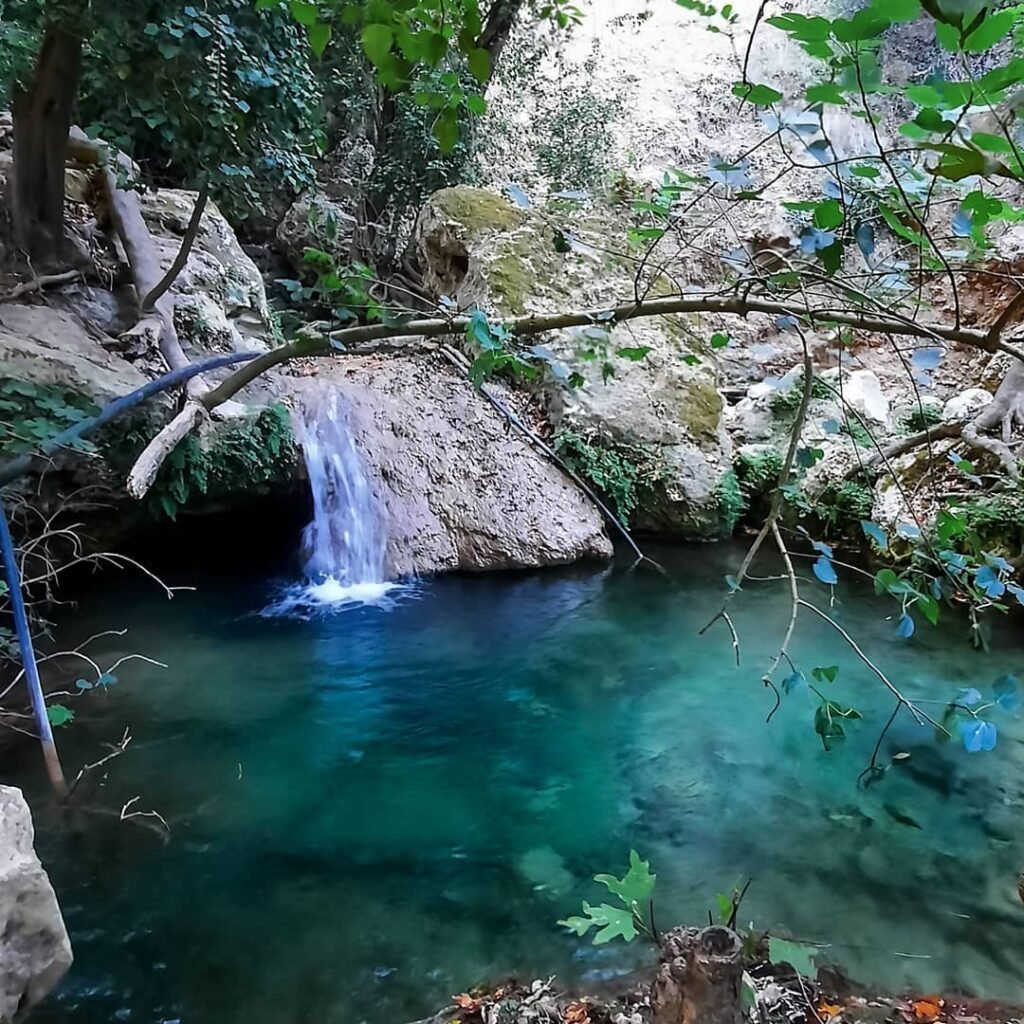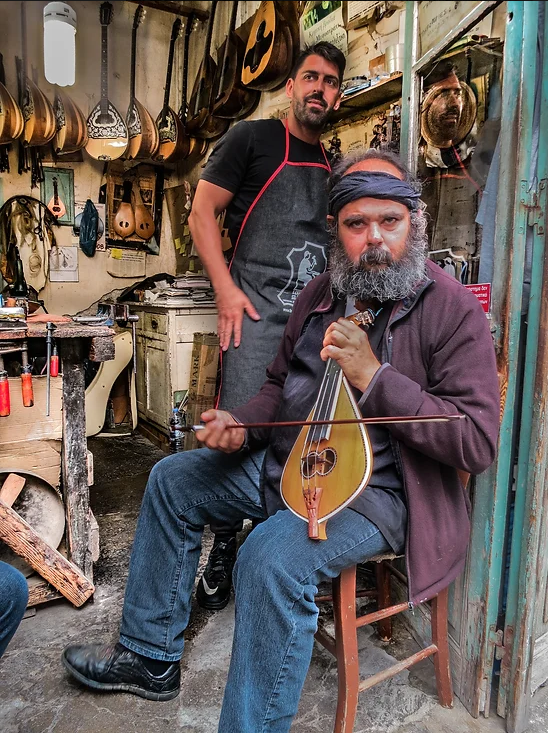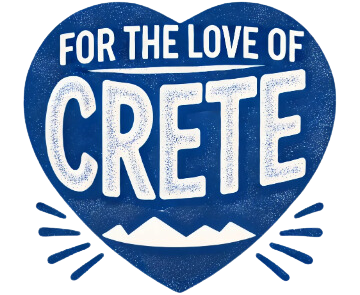Rethymnon, a stunning region in Crete, Greece, holds a wealth of hidden treasures waiting to be discovered. From ancient caves nestled in its mountains to Renaissance-Ottoman architecture in its historic city center, from traditional workshops to local culinary gems scattered throughout its villages – these lesser-known spots reveal the region’s rich history and vibrant culture. Whether you’re passionate about history, food, or authentic local traditions, these ten hidden gems will add depth and authenticity to your Rethymnon, Crete, experience.
1. Alexandrakis Traditional Bakery
Hidden on Tsagri Street in Rethymnon’s old town, this historic bakery has been a cornerstone of local life since around 1800. The moment you turn onto the street, the irresistible aroma of fresh-baked goods leads you straight to its door. What makes this place truly special is its traditional wood-fired oven – a feature that’s deeply rooted in Cretan culinary heritage.

The owner, Stefanos Alexandrakis, arrives at 3 AM every day to fire up the oven and begin his craft. His dedication to traditional baking methods is evident in every product. The bakery offers an impressive array of handmade delights:
- Seven varieties of bread made with flour and durum wheat
- Traditional olive oil rusks (paximadia)
- Handcrafted cheese pies (Cretan kalitsounia)
- Twisted bread buns with cheese and bacon
- Tsoureki filled with chocolate, apple, vanilla cream, or mizithra cheese
The bakery itself holds fascinating stories – including surviving a close call during World War II when German forces mistook its smoke for a factory. Look up at the wall opposite the entrance, and you’ll spot a reminder of this history.

What makes this place truly special is how it preserves Cretan baking traditions. The wood-fired oven, larger than those typically found in other parts of Greece, is a testament to Crete’s communal baking heritage. Each morning, locals gather here just as their grandparents did, making this more than just a bakery – it’s a living piece of Rethymnon’s cultural fabric.
2. Neratze Mosque
Standing proudly in Rethymnon’s old town, the Neratze Mosque showcases one of the finest examples of Renaissance-Ottoman architecture in Crete. This remarkable building has served three distinct roles throughout its history, each leaving its own mark on its character and architecture.

Originally built in the late 16th century as the Augustinian Church of Santa Maria during Venetian rule, the building transformed into a mosque in 1657 following the Turkish conquest. During the Ottoman period, it also served as a prestigious seminary. Its striking minaret, added in 1890, soars over 30 meters high – making it the tallest in the city.
Today, the building has found a new purpose as the Municipal Odeon since 1957, managed by the Rethymno Association for the Promotion of the Arts. After a meticulous seven-year restoration project, the building’s magnificent features shine once again:
- Three elegant semicircular domes
- A circular skylight
- An ornate Renaissance-style entrance with Corinthian columns

What makes this place truly special is the layers of history within its walls. During restoration work, Venetian graves were discovered, adding another fascinating chapter to its story. Now, as you attend a concert or musical performance in this historic space, you’re experiencing the latest evolution of a building that has been at the heart of Rethymnon’s cultural life for centuries.
3. Mili Gorge
Just 8 kilometers south of Rethymnon, Crete, Mili Gorge offers a peaceful escape from the coastal buzz. This hidden oasis stretches for 2.5 kilometers and is perfect for those seeking a less touristy alternative to Crete’s famous gorges. The well-signed trail leads you through lush vegetation, with a gentle altitude difference of 190 meters. I’ve found this to be one of the most refreshing spots during the warm summer months.

What makes this gorge truly remarkable are the 30 historic watermills scattered along its path. These Venetian-era relics once supplied flour to all of Rethymno until 1972. While most stand as silent witnesses to the region’s rich past, one mill has been fully renovated, allowing visitors to understand how these ingenious structures operated. The natural setting is equally impressive – plane trees and fig trees provide welcome shade, while small streams and waterfalls create a soothing backdrop.
You don’t need to be an experienced hiker to enjoy this trail – it’s rated just 1 out of 10 for difficulty. The complete hike takes about 2.5 hours at a comfortable pace, perfect for stopping to explore the mills and take photos. There’s even a welcoming taverna along the route where you can rest and refresh.

Just remember to:
- Wear comfortable shoes
- Bring plenty of water, even on cooler days
- Follow the well-marked signs
- Take your time to explore the renovated watermill
4. Hatziparaskos Handmade Traditional Philo Workshop
In a charming 17th-century Venetian building in Rethymnon’s old town, you’ll find one of Greece’s very last authentic phyllo workshops. The Hatziparaskos family has been keeping this culinary art alive since 1958, and their dedication hasn’t gone unnoticed – they’ve received international recognition, including a viral video that garnered over 5 million views, sharing their craft with the world.

At 86 years old, Giorgos Hatziparaskos still crafts phyllo by hand alongside his wife Katarina and son Paraskevas. Recently honored by Rethymnon’s mayor for preserving this vanishing tradition, Giorgos was moved to tears – a testament to his deep emotional connection to this ancestral craft. The first time I visited, I was mesmerized watching their practiced hands create sheets of dough so delicate you could literally read through them. The traditional phyllo-making process takes four hours – a testament to the family’s dedication to preserving this dying art.

You’ll see first-hand how they:
- Hand-roll the dough to paper-thin perfection
- Master the precise movements passed down through generations
- Create both phyllo and kataifi dough using time-honored techniques
The family has cleverly adapted to modern times by opening their workshop to visitors, offering a glimpse into one of Greece’s last remaining traditional phyllo workshops. The experience ends with a taste of their heavenly baklava – trust me, once you’ve tried hand-crafted phyllo pastries, there’s no going back to the mass-produced versions.
5. Melidoni Cave
Located 22 kilometers from central Rethymnon, Crete, Melidoni Cave offers a powerful blend of natural beauty and historical significance. While most visitors flock to better-known caves, this hidden gem holds stories that span from Neolithic times to recent history. The cave’s connection to Greek mythology – particularly the tale of Talos, the bronze giant who protected Crete – adds another fascinating layer to its appeal.

Inside, the cave reveals a series of remarkable chambers. The “Room of Heroes” houses the Mnemion monument and memorial chapel, silent reminders of the cave’s role during the Cretan Revolution. The “Pashley Room” showcases impressive stalagmites and stalactites, while the “Chamber of Curtains” features unique rock formations that seem to drape from the ceiling.
Unlike the more crowded caves in the region, Melidoni offers a quieter, more contemplative experience, especially if you visit during spring or autumn. When you step outside, panoramic views of the valley and Mount Psiloritis create perfect photo opportunities.
Practical Information:
- Open: April 1 – October 31, 9:00-19:00 (closed during winter)
- Entrance fee: 4€
- Wear sturdy shoes as lighting inside can be limited
- Allow at least an hour to explore properly

The combination of natural wonders and historical depth makes this site particularly special – you’re not just visiting a cave, you’re experiencing a crucial piece of Cretan heritage.
6. Nikos Papalexakis’s Workshop of Cretan Lyra
Just outside the old town gate of Rethymnon, at Dimakopoulou 6, you’ll find Nikos Papalexakis’s Workshop – a living museum where traditional Cretan music comes to life. For 45 years, the Papalexakis family has been crafting Cretan lyras, preserving an essential piece of the island’s musical heritage.
The workshop itself is fascinating. Nikos carefully selects specific woods for each part of the instrument – mulberry, rosewood, or walnut for the back, cedar for the sound box, and other premium woods for various components. What sets the Cretan lyra apart is its unique playing technique: held vertically on the player’s lap, it’s played with a bow (δοξάρι – doxari) in the right hand, while the left hand’s fingernails press against the sides of the strings rather than pressing down on a fingerboard like a violin. This distinctive technique creates that characteristic sound that’s synonymous with Cretan music.

The Cretan lyra is considered the most popular surviving form of the medieval Byzantine lyra and is an ancestor of most European bowed instruments. Each lyra takes an impressive 100 hours to complete, and watching Nikos at work is like witnessing history in motion. Here you can:
- Watch the master craftsman shape wood into musical art
- Learn about the lyra’s deep cultural significance
- Experience traditional Cretan melodies played by Nikos himself
If you’re particularly moved by the experience, you can take home your own lyra, with prices ranging from 300 to 1,000 euros. It’s not just an instrument you’re buying – it’s a piece of Cretan cultural heritage.
7. Rimondi Fountain
The Rimondi Fountain, dating back to 1626, stands as the beating heart of Platinou Square in Rethymnon’s Old Town. Known locally as “Vrisakia”, this elegant Venetian masterpiece is the only surviving fountain from the Venetian era among Rethymnon’s eight historic fountains. It isn’t just a beautiful monument – it’s a living piece of the city’s history that continues to serve its original purpose.

Three lion-headed spouts, fed by a small cistern hidden behind the structure, pour crystal-clear water into stone basins, flanked by ornate Corinthian columns. The fountain bears marks of every era it’s lived through. During Ottoman rule, a dome was added to the structure – though today only one supporting pillar remains, offering a subtle reminder of those times. The architecture tells the story of Rethymnon’s diverse cultural heritage, blending Venetian elegance with Ottoman influences.

What makes this spot truly special is how it remains a gathering point for locals. Early mornings often find residents filling water bottles or catching up on neighborhood news, just as their ancestors did centuries ago. The water is still fresh and cool – locals say it’s some of the best in town.
8. Monastery of Arkadi
Located 23 kilometers from Rethymnon, Crete, at an altitude of 500 meters above sea level, the Monastery of Arkadi stands as much more than just a religious site. The impressive blend of Baroque and Renaissance architecture immediately catches your eye, but it’s the monastery’s powerful history that truly leaves a lasting impression.

Built in the 16th century, this monastery earned its place in history during the Cretan Revolution. In 1866, a dramatic event unfolded here: around 1,000 Greeks (including 259 armed men, 45 monks, and 700 women and children), surrounded by 15,000 Ottoman troops, made the ultimate sacrifice. Rather than surrender, Konstantinos Giamboudakis ignited the gunpowder magazine in what became known as the Arkadi Holocaust – a defining moment in Crete’s fight for independence.
Today, you can explore:
- The two-nave church with its elaborate façade
- The roofless gunpowder room, preserved as a memorial
- The bullet-marked cypress tree in the courtyard
- A small museum showcasing Byzantine icons and artifacts
Practical Information:
- Open: Daily from 8:30 until sunset
- Ample parking available
- On-site café and toilets
- Allow at least 2 hours to fully explore

The monastery’s solemn beauty and profound history make it one of the most moving sites in the region. The well-preserved architecture and carefully maintained grounds tell a story of faith, courage, and sacrifice that has shaped Cretan identity.
9. Paraschakis Olive Oil Estate
Nestled in the picturesque village of Melidoni, about 30 kilometers from Rethymnon, Paraschakis Olive Oil Estate offers a fascinating journey through the evolution of olive oil production. Unlike typical olive oil producers, this family-run estate provides visitors with a unique perspective on three distinct historical methods of creating Crete’s “liquid gold” – from traditional animal-powered processes to diesel machinery, and finally to modern centrifugal techniques.

What makes this place truly special is how it operates as part of the local cooperative, where farmers bring their yearly harvest to be transformed into premium olive oil. The estate’s American-Greek owner, Joanna, brings the experience to life with engaging guided tours that walk you through every step of the production process. Her passion for the craft is contagious, and you will easily find yourself completely absorbed in learning about the meticulous journey from hand-picking to final bottling.
The highlight of any visit is undoubtedly the olive oil tasting session. Here, you’ll discover the subtle nuances that make Cretan olive oil so distinctive. The estate’s commitment to cold-pressing methods ensures that every bottle retains its natural flavors and nutritional properties. It’s an eye-opening experience that will change how you think about this essential Mediterranean ingredient.
Beyond olive oil, the estate offers a wonderful selection of local Cretan products. You can purchase traditional raki, the island’s beloved spirit, along with other regional specialties. This variety of authentic local goods makes it the perfect spot to stock up on high-quality Cretan products to take home.

What to expect:
- Educational tours through three generations of olive oil production methods
- Engaging demonstrations of the entire production process
- Professional olive oil tasting sessions
- Opportunity to purchase authentic Cretan olive oil directly from the estate
The combination of historical preservation, modern production techniques, and warm hospitality makes Paraschakis Olive Oil Estate a must-visit destination for anyone interested in understanding the deep-rooted connection between Cretan culture and olive oil production.
Conclusion
These hidden gems of Rethymnon reveal the region’s true character – from ancient sanctuaries to family-run workshops, from natural wonders to culinary treasures. Each spot offers a unique window into the area’s rich heritage and living traditions. Whether you’re exploring the mystical Melidoni Cave, savoring fresh pastries at Alexandrakis Bakery, or watching artisans craft traditional lyras, these lesser-known attractions will make your visit to Rethymnon truly memorable.
I have to admit, I’ve developed a real soft spot for this region of Crete. Between the warm hospitality of its people, the rich tapestry of its history, and those unforgettable flavors of traditional Cretan cuisine, Rethymnon has a way of capturing your heart and drawing you back time and time again.

